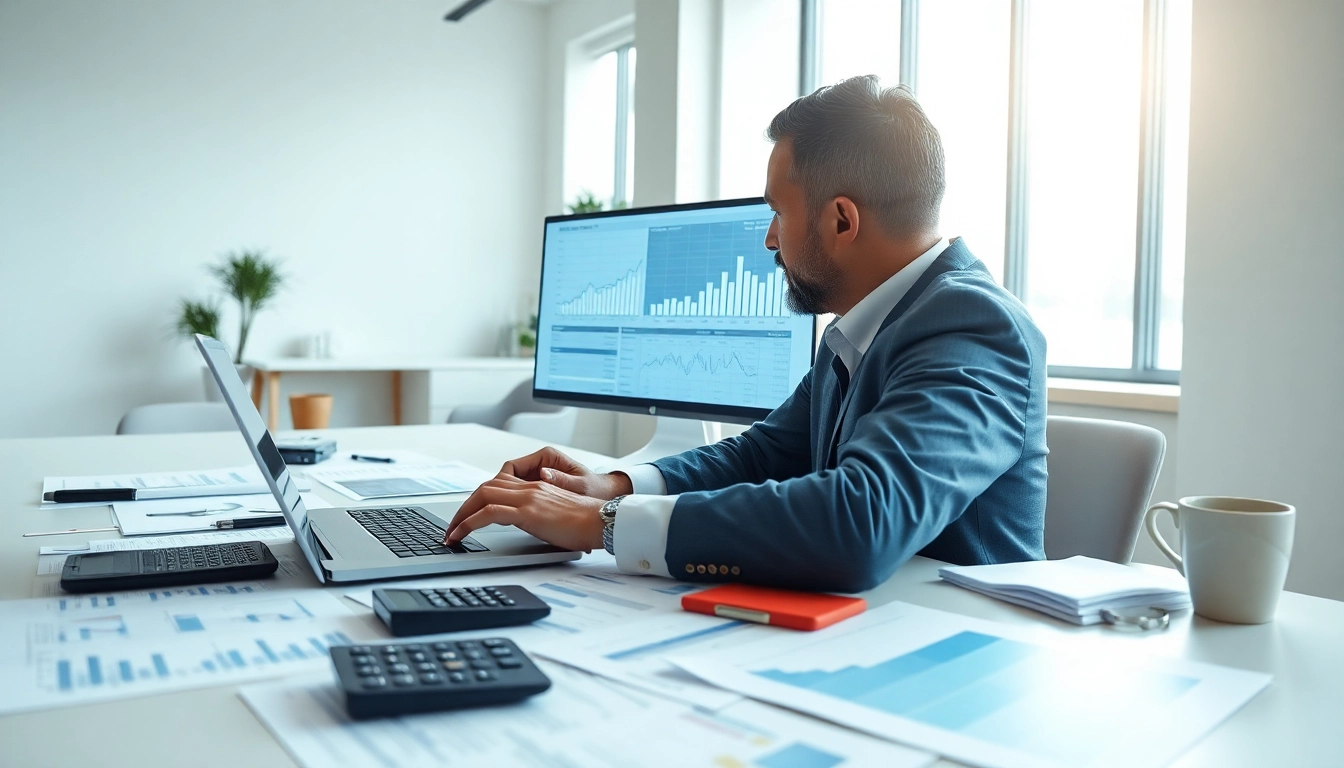Understanding Trade Futures
What Are Futures Contracts?
Futures contracts are standardized agreements to buy or sell a specific asset at a predetermined price on a specified future date. These contracts are typically used for commodities, such as oil or grain, as well as financial instruments like stock indices and currencies. The essence of futures trading is that it allows traders to speculate on the price movements of various assets without requiring the physical delivery of the commodities involved. Instead, these contracts are settled in cash for most of the financial derivatives, making it a convenient option for traders looking to leverage price changes.
The trade futures market is regulated by the Commodity Futures Trading Commission (CFTC) in the United States. This regulation ensures that trades are conducted transparently and fairly, providing a level of confidence for all market participants. Understanding the legal and operational frameworks governing futures contracts is essential for anyone looking to enter this market.
The Mechanics of Futures Trading
Futures trading involves several steps: entering a trade, maintaining margin accounts, and ultimately settling the contract, either through cash or delivery. When a trader enters a futures contract, they agree to exchange a particular asset at a future date for a specified price. Since the entire futures market operates on speculation, traders take positions based on whether they think the price of the asset will go up or down.
The concept of margin is a crucial aspect of futures trading. Margin is not a down payment; rather, it’s a security deposit that ensures both parties in the futures contract meet their obligations. There are two types of margins: initial margin, which is required to open a position, and maintenance margin, which is the minimum amount that must be maintained in the margin account to keep the position open.
Key Differences Between Futures and Other Investments
Futures differ significantly from other asset classes such as stocks or bonds. One of the most striking features of futures trading is leverage. Traders can control large amounts of an asset with a relatively small investment. While this can amplify gains, it also increases the risk of significant losses.
Unlike traditional stock investments, futures contracts have expiration dates, requiring traders to either close their positions or roll over their contracts before expiration. This continuous need to monitor and manage positions can be daunting, especially for newer traders.
Benefits of Trade Futures
Leverage and Capital Efficiency
One of the primary advantages of trading futures is leverage. This allows traders to control significant positions with minimal capital, making it an attractive option for individuals looking to maximize their profits. However, while it allows for potentially higher returns, it also comes with increased risks—traders can lose more than their initial investment if the market moves against them.
The capital efficiency offered by futures contracts makes them appealing for many investors. By utilizing leverage, traders can allocate funds into various markets without needing excessive amounts of capital tied up in one asset. This ability to diversify while maintaining a focus on growth can lead to substantial portfolio enhancement for experienced traders.
Diverse Asset Classes Available
Futures contracts span a broad range of asset classes, including agricultural products, metals, energy, currencies, and even stock indices. This diversity allows traders to engage in multiple markets simultaneously, capitalizing on various price movements across different economic sectors. Each asset class behaves differently under varied economic conditions, offering traders opportunities to hedge against risks or exploit market inefficiencies.
24/7 Market Access and Flexibility
Modern trading platforms offer the possibility to trade futures nearly around the clock, allowing traders to respond quickly to news and events that may affect asset prices. This constant access can be beneficial for both day traders and those with longer-term strategies. Additionally, the flexibility in entering and exiting positions without the constraints of traditional market hours empowers traders to make their moves based on real-time market analysis.
How to Get Started with Trade Futures
Selecting a Futures Broker
Before one can begin trading futures, selecting the right broker is crucial. A quality broker should offer a user-friendly platform, competitive fees, and robust support resources. It is vital to choose a broker that is properly licensed and regulated to ensure safety and the reliability of transactions. Traders should also consider the broker’s margin requirements, trading tools, educational resources, and customer service quality.
Opening and Funding Your Futures Account
Once a broker is selected, the next step is to open a futures trading account. This process typically involves providing personal identification, completing necessary paperwork, and funding the account. Various funding options are usually available, including bank transfers, checks, and electronic payment methods. Understanding the funding process is essential, as it directly affects the speed at which a trader can activate their account and begin trading.
Understanding Margin Requirements
As mentioned previously, margin is a critical concept in futures trading. Before placing trades, traders must understand both initial and maintenance margin requirements as outlined by their broker. These requirements can vary significantly depending on the asset class and the broker. Maintaining margin levels is essential to avoid a margin call, where the broker requires additional funds to keep the position open. Being proactive about margin management can help traders avoid potentially detrimental positions.
Strategies for Successful Futures Trading
Technical Analysis and Charting Techniques
Technical analysis is a powerful tool for futures traders. It involves analyzing historical price data and trends to forecast future price movements. Traders use various charting techniques to identify patterns, signals, and indicators that can inform their decision-making process. Popular tools include moving averages, the Relative Strength Index (RSI), and support/resistance levels.
Incorporating technical analysis into trading strategies can significantly increase a trader’s chances of success. By recognizing price patterns and market trends, traders can make more informed decisions, minimizing risk and enhancing potential profits.
Risk Management Practices in Futures Trading
Implementing effective risk management strategies is vital in futures trading. Given the high leverage often involved, even the most seasoned traders can face significant losses if risk is not managed appropriately. Traders should establish clear risk parameters for each trade, including stop-loss orders that define the maximum loss one is willing to accept. Additionally, portfolio diversification and proper position sizing play crucial roles in mitigating risk across trading strategies.
Staying Updated with Market Trends and News
The financial markets are heavily influenced by economic and geopolitical events. Staying updated with relevant news can help traders anticipate market movements and make informed trading decisions. Utilizing resources such as financial news outlets, economic calendars, and market analysis reports can provide valuable insights that enhance a trader’s strategy.
Next Steps for Aspiring Futures Traders
Building a Personalized Trading Plan
A well-structured trading plan is the foundation of any successful trading strategy. Aspiring futures traders should take the time to develop a personalized trading plan that outlines their objectives, risk tolerance, trading methods, and market focus. The plan should include specific criteria for entering and exiting trades, as well as strategies for reviewing performance and adjusting the plan as necessary.
Practicing with Simulated Trading Platforms
Before committing actual capital, novice traders can benefit from simulated trading platforms, often provided by brokers. These platforms allow traders to practice trading futures without financial risk. A demo account facilitates the development of trading strategies, the honing of skills, and the understanding of how the market operates, enabling traders to gain confidence before transitioning to real trades.
Continuous Learning and Improvement
Finally, continuous education and self-improvement are essential for success in futures trading. The financial markets are dynamic, and aspiring traders should engage in ongoing learning through books, courses, webinars, and mentorship. Reflecting on past trades—both successful and unsuccessful—can significantly enhance trading strategies and decision-making over time. Building a network of experienced traders can also serve as a valuable resource for sharing insights and refining strategies.



